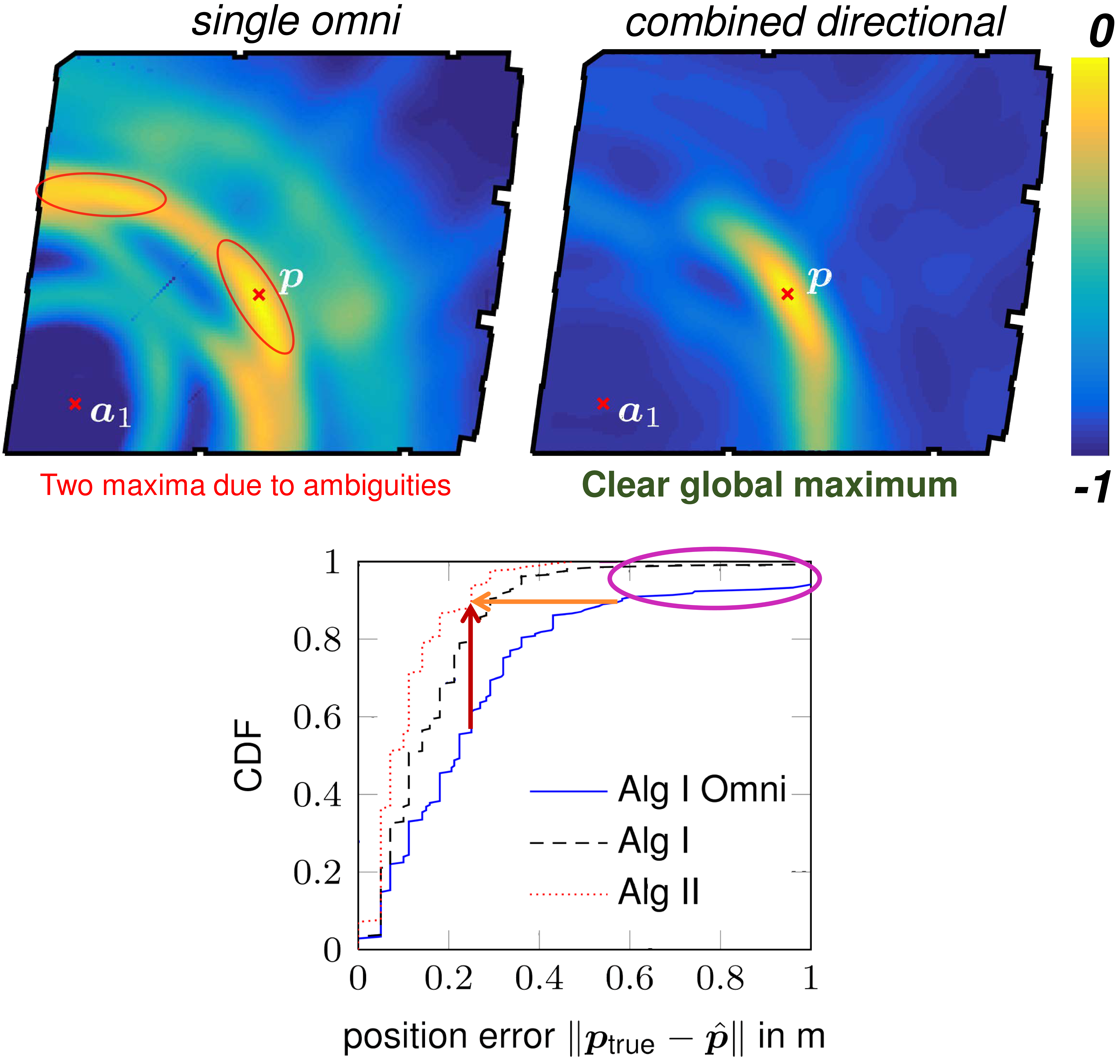Multipath-assisted Indoor Positioning Enabled by Directional UWB Sector Antennas
- Published
- Fri, Sep 01, 2017
- Tags
- rotm
- Contact

High-accuracy indoor radio positioning can be achieved by using high signal bandwidths to increase the time resolution. Multiple fixed anchor nodes are needed to compute the position or alternatively, reflected multipath components can be exploited with a single anchor. In this work, we propose a method that explores the time and angular domains with a single anchor. This is enabled by switching between multiple directional ultra-wideband (UWB) antennas. The UWB transmission allows to perform multipath resolved indoor positioning, while the directionality increases the robustness to undesired, interfering multipath propagation with the benefit that the required bandwidth is reduced. The positioning accuracy and performance bounds of the switched antenna are compared to an omni-directional antenna. Two positioning algorithms are presented based on different prior knowledge available, one using floorplan information only and the other using additionally the beampatterns of the antennas. We show that the accuracy of the position estimate is significantly improved, especially in tangential direction to the anchor.
The top row of the figure shows the position likelihood for an office environment together with the anchor and agent position. On the left it is shown for an omni-directional antenna at the anchor and on the right it is shown for the combination of four directional UWB antennas. It can be seen that the antennas help to resolve ambiguities and increase the steepness of the likelihood. In the bottom row the resulting cumulative distribution function of the position error is shown. Using the combined directional antennas (Alg II) results in an accuracy gain (orange arrow), a robustness gain (red arrow) and it reduces outliers (pink circling).
More information can be found in our paper.
Browse the Results of the Month archive.
